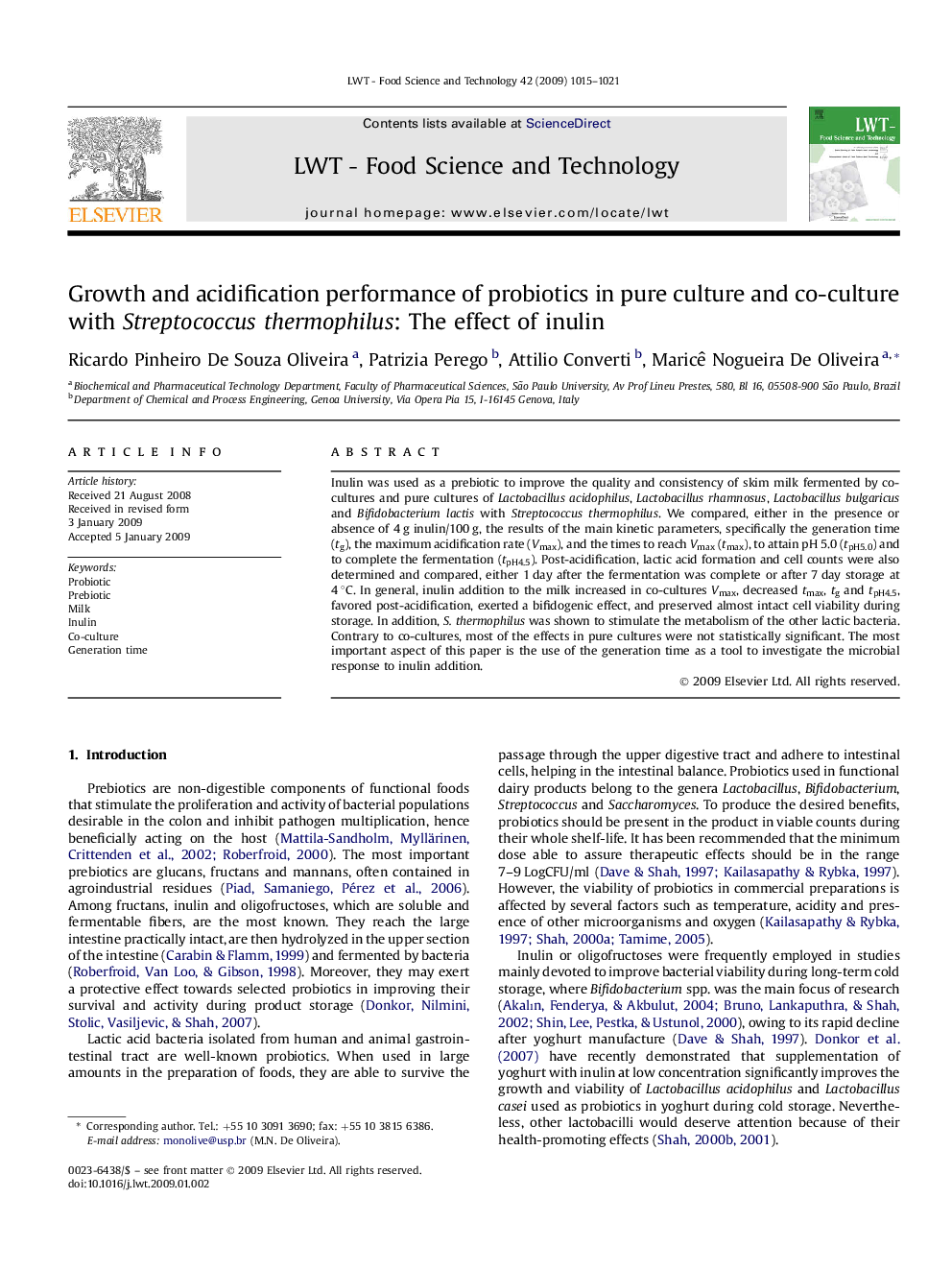| Article ID | Journal | Published Year | Pages | File Type |
|---|---|---|---|---|
| 4564894 | LWT - Food Science and Technology | 2009 | 7 Pages |
Inulin was used as a prebiotic to improve the quality and consistency of skim milk fermented by co-cultures and pure cultures of Lactobacillus acidophilus, Lactobacillus rhamnosus, Lactobacillus bulgaricus and Bifidobacterium lactis with Streptococcus thermophilus. We compared, either in the presence or absence of 4 g inulin/100 g, the results of the main kinetic parameters, specifically the generation time (tg), the maximum acidification rate (Vmax), and the times to reach Vmax (tmax), to attain pH 5.0 (tpH5.0) and to complete the fermentation (tpH4.5). Post-acidification, lactic acid formation and cell counts were also determined and compared, either 1 day after the fermentation was complete or after 7 day storage at 4 °C. In general, inulin addition to the milk increased in co-cultures Vmax, decreased tmax, tg and tpH4.5, favored post-acidification, exerted a bifidogenic effect, and preserved almost intact cell viability during storage. In addition, S. thermophilus was shown to stimulate the metabolism of the other lactic bacteria. Contrary to co-cultures, most of the effects in pure cultures were not statistically significant. The most important aspect of this paper is the use of the generation time as a tool to investigate the microbial response to inulin addition.
